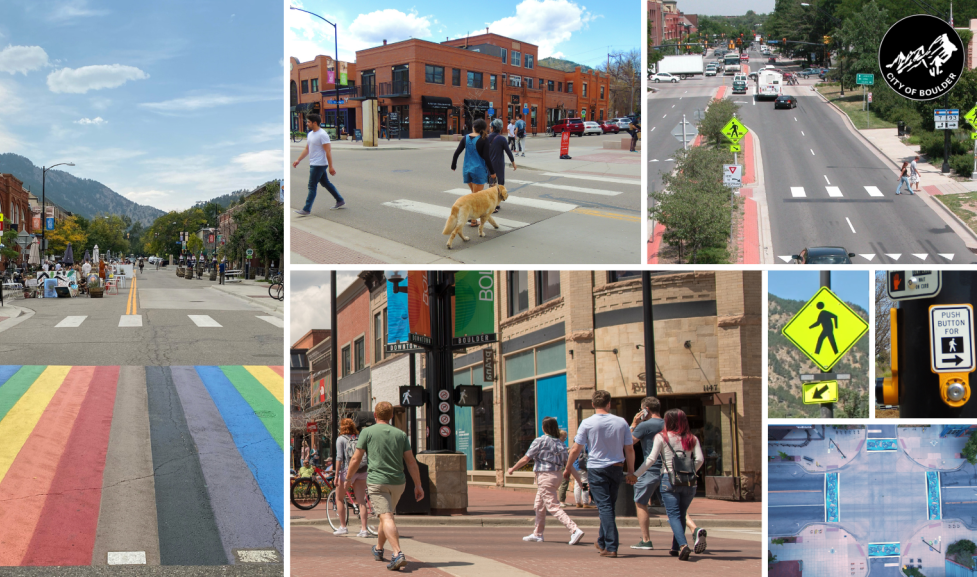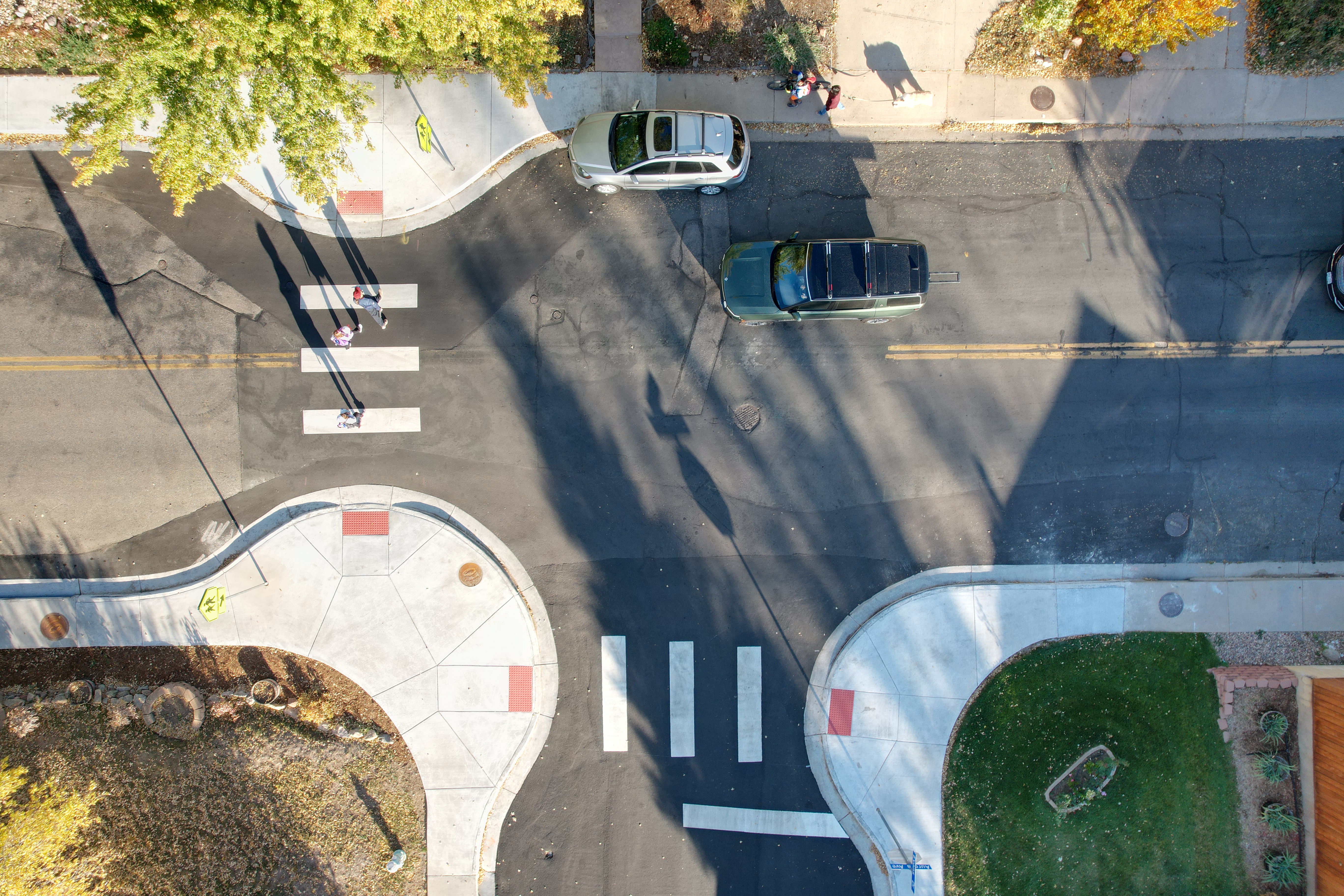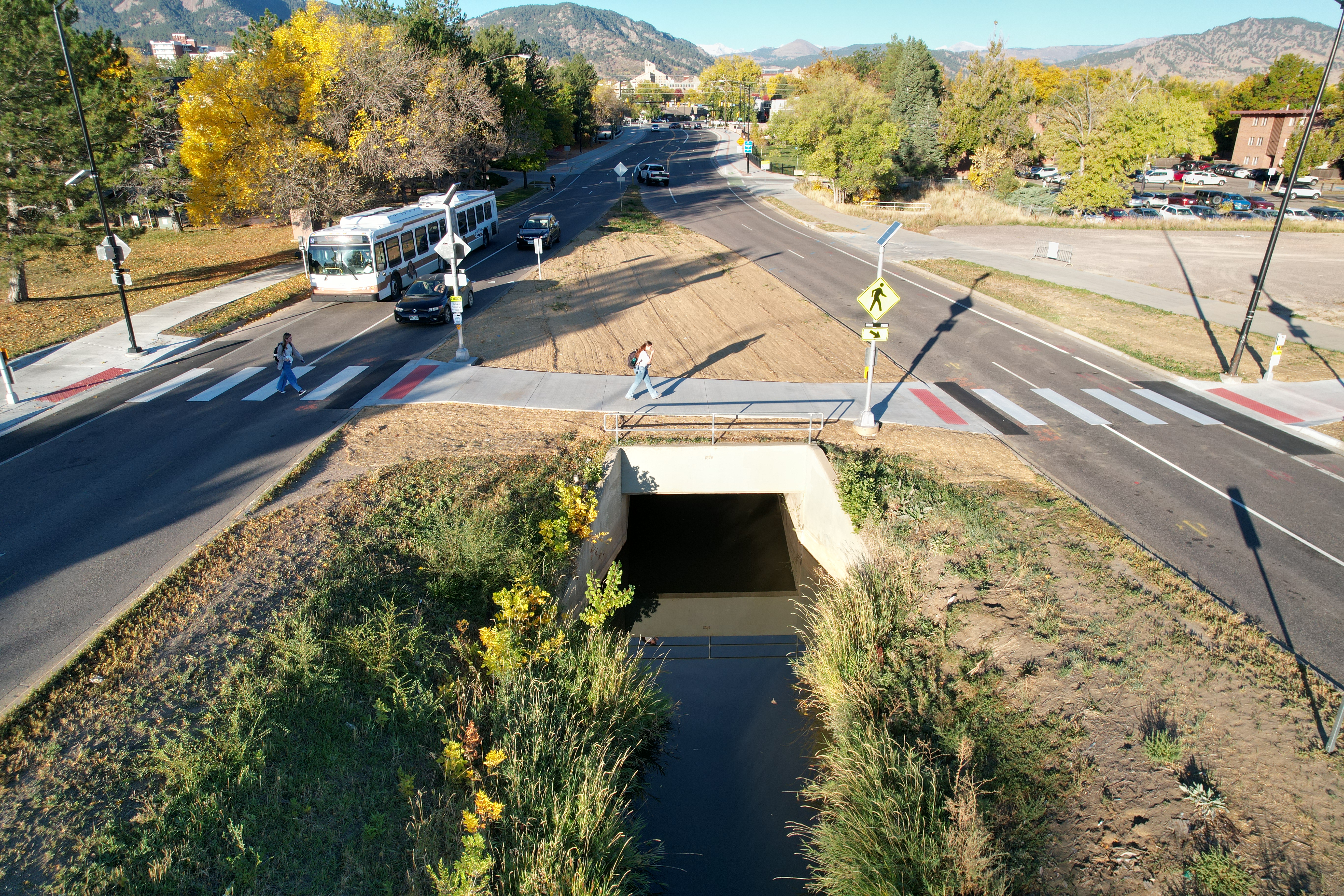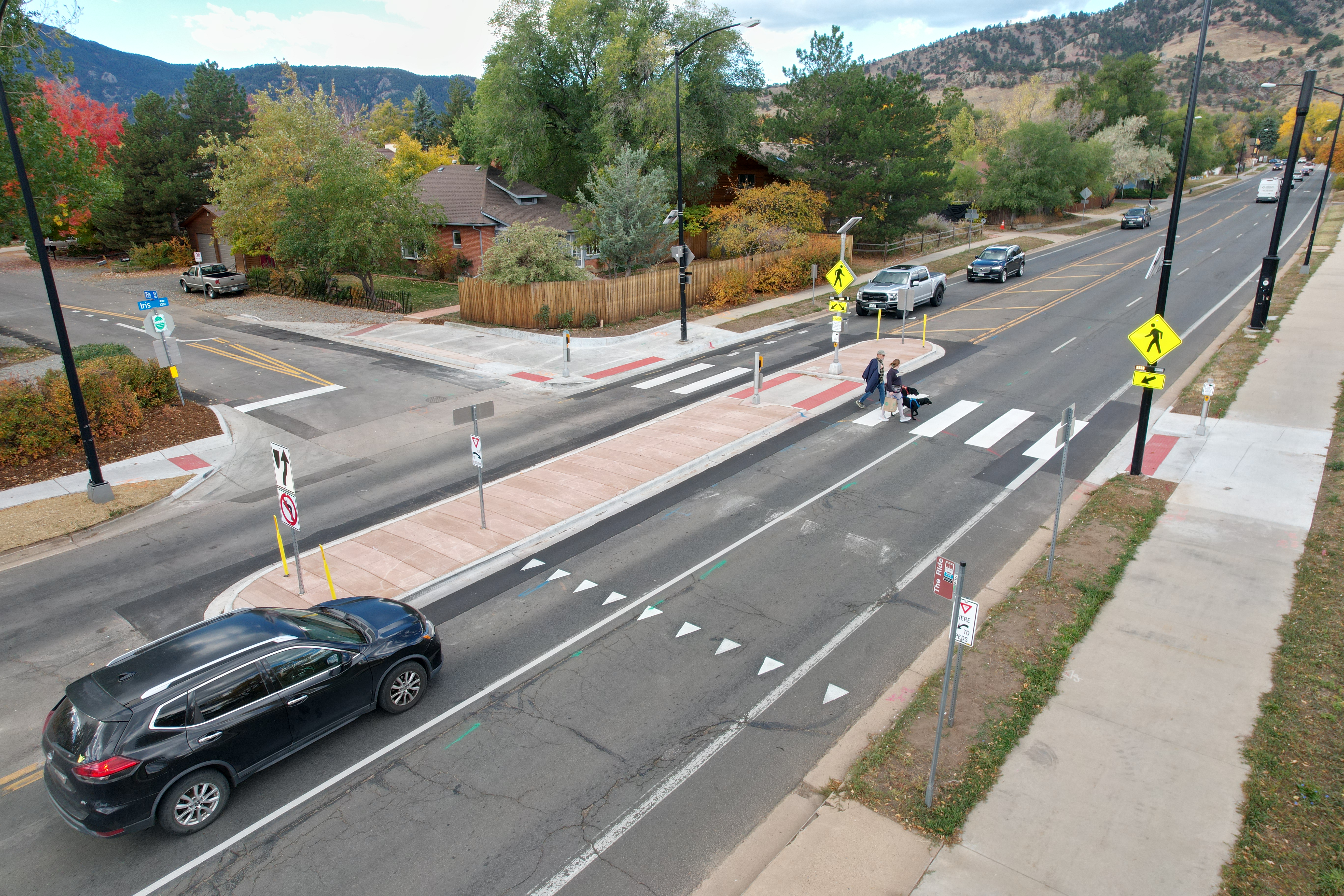Grant-funded crosswalks are complete!
We received funding from the Denver Regional Council of Governments (DRCOG) Community Mobility Planning and Implementation (CMPI) 2019 grant program to construct two new crosswalks and make enhancements to an existing crosswalk in 2024. Learn more about how these three new grant-funded crosswalk projects light the way for safer streets.
These three locations were chosen based on their alignment with public input, the Neighborhood GreenStreets Program and findings from the 30th and Colorado Corridors Study.
Explore the tabs below for details.







